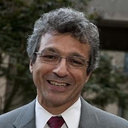Neural correlates of the antinociceptive effects of repetitive transcranial magnetic stimulation on central pain after stroke.
Atslēgvārdi
Abstrakts
BACKGROUND
Repetitive transcranial magnetic stimulation (rTMS) modulates central neuropathic pain in some patients after stroke, but the mechanisms of action are uncertain.
OBJECTIVE
. The authors used diffusion tensor imaging (DTI) and functional MRI (fMRI) to evaluate the integrity of the thalamocortical tract (TCT) and the activation pattern of the pain network in 22 patients with poststroke central pain.
METHODS
Each patient underwent daily 10-Hz rTMS sessions for 1000 pulses on 5 consecutive days over the hotspot for the first dorsal interosseus muscle. Pain severity was monitored using the Visual Analogue Scale (VAS). Mood was assessed by the Hamilton Depression Rating Scale.
RESULTS
Clinical data from all participants along with the DTI and fMRI findings from 10 patients were analyzed. VAS scores decreased significantly, if modestly, following administration of rTMS in 14 responders, which lasted for 2 weeks after the intervention. Regression analysis showed a significant correlation between less initial depression and higher antalgic effect of rTMS. Integrity of the superior TCT in the ipsilesional hemisphere showed significant correlation with change of VAS score after rTMS. fMRI showed significantly decreased activity in the secondary somatosensory cortex, insula, prefrontal cortex, and putamen in rTMS responders, whereas no change was noted in nonresponders.
CONCLUSIONS
. Mood may affect the modest antinociceptive effects of rTMS that we found, which may be mediated by the superior TCT through modulation of a distributed pain network.


